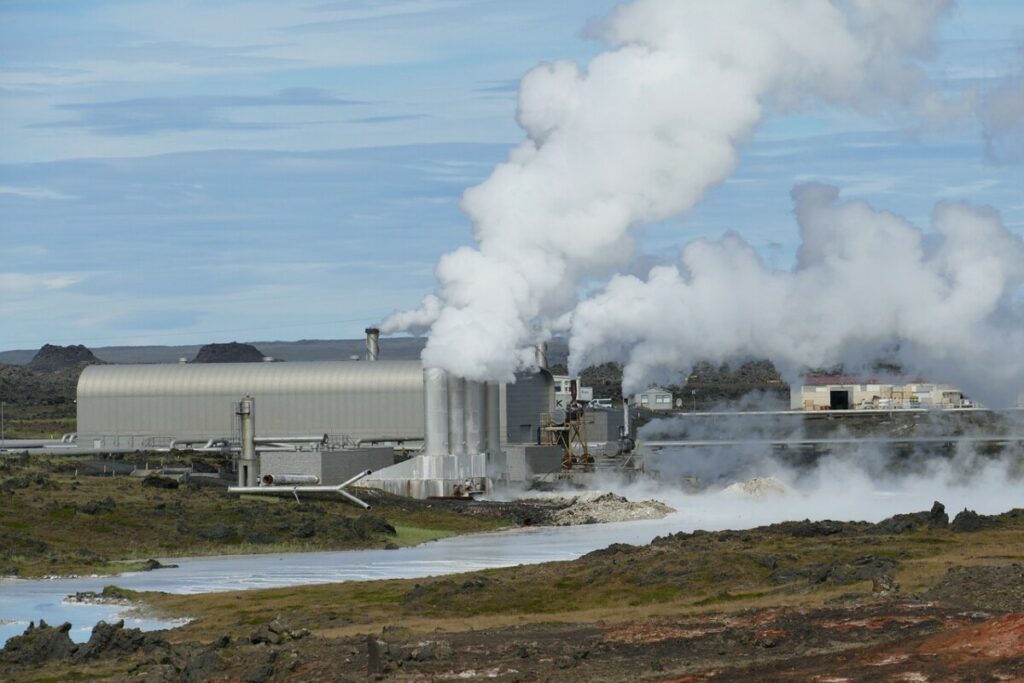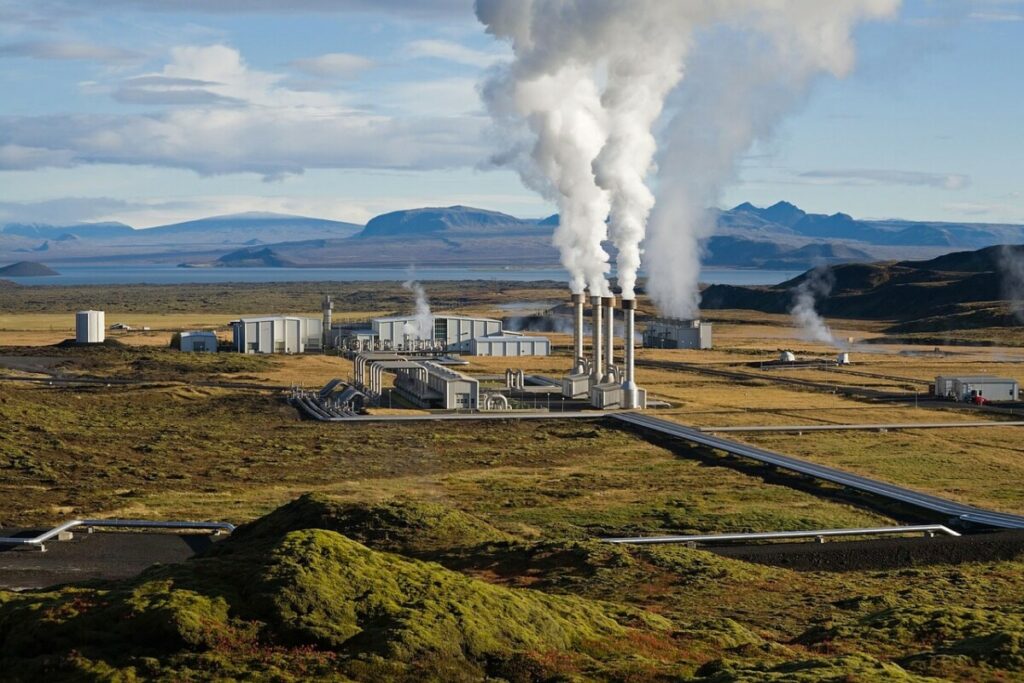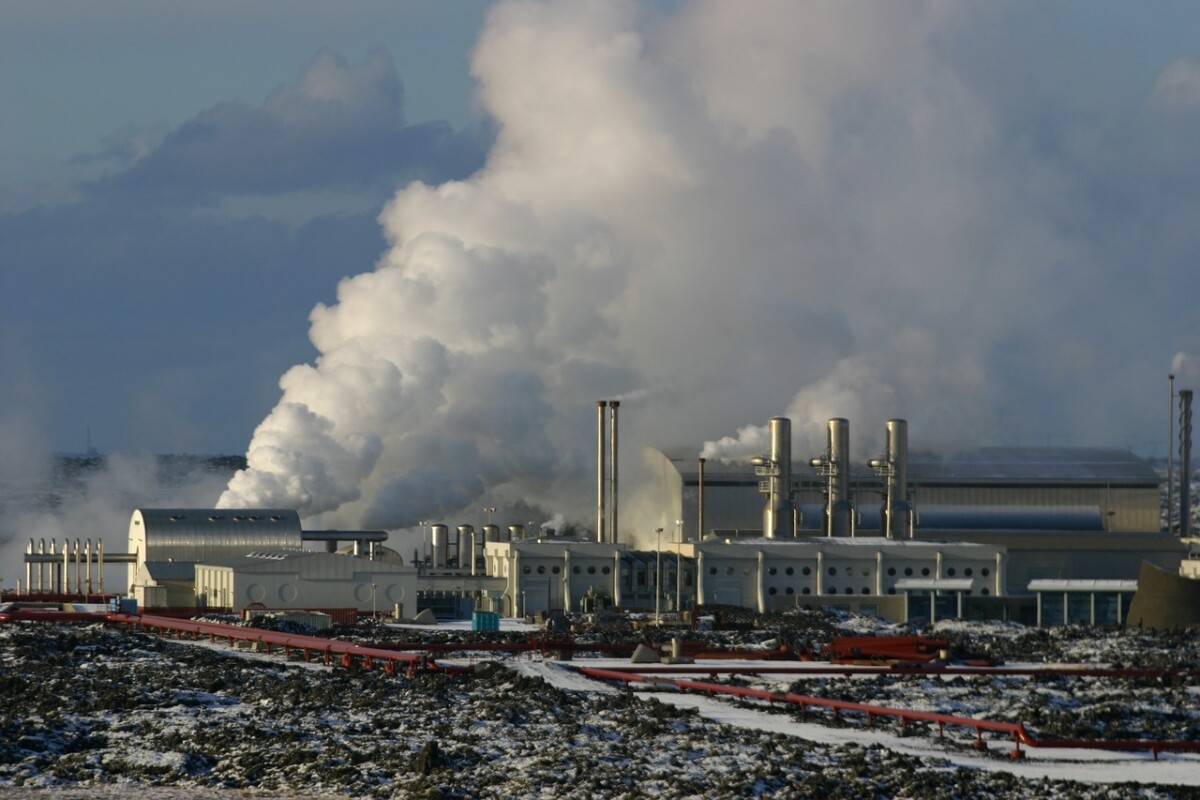Does Geothermal Energy Cause Pollution?
As the world pivots toward renewable energy sources, the question “Does geothermal energy cause pollution?” becomes increasingly pertinent. This article delves into the environmental footprint of geothermal energy. Comparing it with traditional fossil fuels and highlighting its role in a sustainable future.
What is Geothermal Energy?
Geothermal energy harnesses the Earth’s internal heat to generate electricity and provide heating. This section explains the basic mechanisms behind geothermal systems. Including direct-use applications, geothermal heat pumps, and electricity generation through geothermal power plants.
Understanding Geothermal Systems
- Heat Source: The Earth’s core is the primary source of geothermal energy.
- Types of Geothermal Power Plants: Including dry-steam, flash steam, and binary cycle plants.
- Geothermal Heat Pumps: These systems use the stable ground temperature to heat and cool buildings.
How Does Geothermal Energy Work?
- Harnessing Heat: Geothermal plants convert the heat from the Earth’s crust into usable energy.
- Electricity Production: Steam or hot water from underground reservoirs drives turbines.
- Heat Distribution: In heating applications, geothermal energy is used directly to warm homes and commercial buildings.
Does Geothermal Energy Cause Pollution?

Environmental Impacts of Geothermal Energy
Emissions from Geothermal Sites
While geothermal energy is celebrated for its minimal atmospheric emissions, it is not entirely free from environmental impacts. Key pollutants include:
- Greenhouse Gases: Primarily carbon dioxide (CO2) and small amounts of methane and nitrous oxide.
- Other Emissions: Trace amounts of hydrogen sulfide, sulfur dioxide, and nitrogen oxides, which can contribute to air pollution.
Comparative Analysis with Fossil Fuels
- Lower Emission Levels: Geothermal energy emits far less CO2 compared to coal and natural gas plants.
- Reduced Air Pollutants: Unlike fossil fuel combustion, geothermal energy produces negligible particulate matter and lower sulfur dioxide levels.
Geothermal Energy and Water Quality
Concerns about water pollution arise mainly from the disposal of geothermal fluids and the potential for contamination of surface and underground water sources. Proper management techniques are critical to mitigating these risks.
Sustainability and Efficiency of Geothermal Energy
Geothermal energy is a reliable and efficient renewable resource but involves certain environmental considerations:
- Land Use and Local Communities: The development of geothermal sites can affect land use and cause disturbances to local ecosystems and communities.
- Sustainability Practices: Innovative approaches such as closed-loop systems and improved site management can help minimize the environmental impact.
Does Geothermal Energy Cause Pollution: Frequently Asked Questions

Does geothermal energy contribute to global warming?
Geothermal energy contributes significantly less to global warming compared to fossil fuels. While it does emit some greenhouse gases like carbon dioxide and methane, the levels are much lower than those produced by coal, oil, and natural gas plants. The carbon footprint of geothermal power plants is minimal. Making it an environmentally friendly option that helps combat climate change by providing a stable, low-carbon energy source.
What are the main pollutants associated with geothermal energy production?
The main pollutants produced by geothermal energy include:
- Carbon Dioxide (CO2): Although much lower than fossil fuels, CO2 is still emitted during geothermal energy production.
- Hydrogen Sulfide (H2S): Known for its “rotten egg” smell, this gas can be released during geothermal drilling and operation. But is often captured and converted into less harmful substances.
- Sulfur Dioxide (SO2) and Nitrogen Oxides (NOx): These gases can contribute to air pollution and acid rain. Although their levels are significantly lower compared to emissions from fossil fuel combustion.
- Particulate Matter: Though minimal, particulate matter can be released during the drilling process.
- Trace Metals: Elements like arsenic and mercury can sometimes be found in geothermal fluids. And need careful management to prevent environmental contamination.
How do geothermal emissions compare to those of traditional energy sources like coal plants?
Geothermal emissions are substantially lower than those from traditional energy sources like coal plants. For example, geothermal power plants emit about 5% of the CO2 and nearly negligible amounts of nitrous oxide and particulate matter compared to coal-fired power plants. This makes geothermal a much cleaner alternative, contributing far less to air pollution, acid rain, and global warming.
Can modern technology reduce the environmental impact of geothermal energy?
Yes, modern technology plays a crucial role in reducing the environmental impact of geothermal energy. Advances include:
- Improved Emission Controls: Technologies such as scrubbers and condensers are used to capture and reduce emissions of gases like hydrogen sulfide and sulfur dioxide.
- Enhanced Geothermal Systems (EGS): These systems use engineering methods to create or expand the heat-extracting capabilities of geothermal resources. Allowing for more efficient energy production with less environmental disruption.
- Closed-loop Systems: These systems contain all geothermal fluids within the plant. Preventing contamination of local water sources and reducing the risk of surface pollution.
- Real-time Monitoring: Advances in monitoring technology allow for real-time assessment of environmental impacts, enabling immediate adjustments to minimize these effects.
These technologies and practices are essential for ensuring that geothermal energy remains a sustainable and environmentally friendly resource.
Does Geothermal Energy Cause Pollution Conclusion
The initial exploration into whether geothermal energy causes pollution reveals a complex picture. While significantly cleaner than fossil fuels, geothermal systems are not devoid of environmental impacts. Sustainable practices and technological advancements are key to maximizing the benefits of geothermal energy while minimizing its ecological footprint.
Deep Dive: Analyzing Emissions and Their Effects on Pollution

Carbon Dioxide and Greenhouse Gas Emissions
A critical aspect of the discussion around “Does geothermal energy cause pollution?” involves assessing carbon dioxide and other greenhouse gas emissions. Geothermal power plants, notably those using conventional steam-driven systems, release a fraction of the carbon dioxide compared to fossil fuel plants. According to the U.S. Department of Energy, geothermal facilities emit about 45 grams of CO2 per kilowatt-hour, significantly less than the approximately 1000 grams from coal plants and 469 grams from natural gas systems.
- Carbon Footprint: The low emission rates of CO2 make geothermal energy a potent tool in combating climate change.
- Other Greenhouse Gases: Minimal emissions of methane and nitrous oxide further cement geothermal’s position as a clean energy source.
Local Air Quality and Acid Rain
Despite its benefits, geothermal energy can have localized negative impacts on air quality due to the release of non-CO2 gases such as hydrogen sulfide, which produces a distinct sulfur smell. When released into the atmosphere, sulfur dioxide and nitrogen oxides from geothermal plants can contribute to acid rain, though significantly less so than emissions from coal or oil power plants. Addressing these emissions through advanced scrubbing technologies and monitoring systems can help mitigate their impact, ensuring that geothermal energy remains a predominantly clean resource.
- Technology in Action: Modern geothermal plants employ technologies like condensers and scrubbers to capture and recycle these gases, greatly reducing the potential for air pollution.
Water Pollution and Geothermal Operations
Potential Contaminants
The use of geothermal energy can impact water quality if not managed correctly. Geothermal fluids extracted from the earth contain a variety of dissolved minerals and gases, which, if released untreated into rivers or lakes, can harm aquatic ecosystems. The primary contaminants include arsenic, lead, and mercury, which pose significant risks to water bodies and public health.
- Management Strategies: Effective filtration systems and the reinjection of cooled geothermal fluids back into the earth help minimize water pollution risks.
Geothermal Fluid Disposal
The disposal of geothermal fluids is a critical aspect in preventing environmental degradation. By reinjecting spent fluids back into geothermal reservoirs, the industry can prevent surface contamination and preserve groundwater quality, maintaining the balance within local ecosystems.
- Closed-Loop Systems: These systems ensure that geothermal fluids are contained and do not interact with external environments, providing a sustainable solution to manage waste and protect water sources.
Impact on Land and Local Communities
Land Subsidence and Seismic Activity
One of the lesser-known impacts of geothermal energy extraction is land subsidence, which occurs when large volumes of underground fluids are removed, causing the surface to compact and sink. Additionally, the injection of fluids in enhanced geothermal systems has been linked to minor seismic activities, though these are generally of low magnitude and less frequent compared to those associated with other activities like hydraulic fracturing in oil and gas industries.
- Monitoring and Regulation: Ongoing monitoring and strict regulatory frameworks can mitigate the risks of land subsidence and seismic activity, ensuring that geothermal energy remains a safe and viable renewable resource.
Community Engagement and Development
The development of geothermal resources can bring economic benefits to local communities, including job creation and infrastructure development. However, it is crucial to engage with these communities to address concerns and ensure that the benefits of geothermal development are shared equitably.
- Inclusive Development: Strategies that include community input and provide clear benefits to local residents can help foster positive relationships and support sustainable development.
This section has elaborated on the environmental aspects of whether “Does geothermal energy cause pollution?” by focusing on specific emissions, water and land impact, and community relations. The next parts will further explore technological advancements and prospects of geothermal energy.
Technological Innovations Reducing Geothermal Pollution

Advancements in Emission Control
The question “Does geothermal energy cause pollution?” leads us to consider how technology can minimize environmental impacts. Recent technological advancements have significantly improved emission controls in geothermal energy production. For example, advanced scrubbing systems can now more efficiently remove sulfur compounds and other pollutants from geothermal emissions before they are released into the atmosphere. These systems not only enhance air quality but also ensure compliance with stringent environmental regulations.
- Innovative Capture Methods: Techniques like adsorption, absorption, and condensation are being refined to capture more emissions at their source, reducing the overall environmental footprint of geothermal plants.
- Utilization of Emission Byproducts: Some innovative approaches involve converting captured sulfur into marketable byproducts, such as agricultural fertilizers, further reducing waste and creating additional economic value.
Improving Geothermal Efficiency
Enhancing the efficiency of geothermal power plants is another critical area of focus. By increasing the conversion efficiency, plants can generate more electricity from the same amount of geothermal heat, which reduces the need for extensive land use and minimizes the environmental disturbance associated with new drilling sites.
- Binary Cycle Power Plants: These plants can operate at lower temperatures than traditional geothermal systems, allowing them to extract energy more efficiently and from a broader range of geothermal sources.
- Enhanced Geothermal Systems (EGS): These systems, which involve artificially creating reservoirs in dry rock to extract heat, are being developed to increase the reachable resources of geothermal energy substantially.
Future Directions in Geothermal Energy

Expansion of Geothermal Applications
Beyond electricity generation, geothermal energy is being used in innovative ways that could broaden its application and reduce pollution. District heating, agricultural drying, and aquaculture are examples of direct-use applications that utilize geothermal heat more directly, avoiding the complexities and potential pollutants associated with power generation.
- District Heating Systems: These systems distribute heat from a central geothermal source through a network of insulated pipes to residential and commercial buildings, providing a cleaner alternative to heating systems powered by fossil fuels.
- Agricultural Applications: Geothermal energy can be used for greenhouse heating, helping to extend growing seasons and reduce dependency on energy sources that cause pollution.
Sustainable Practices in Geothermal Development
Adopting sustainable practices is crucial for reducing the environmental impact of geothermal energy. This involves careful site selection, responsible resource management, and community involvement to ensure that geothermal development does not lead to significant ecological or social disruption.
- Responsible Resource Management: This includes monitoring geothermal reservoirs to prevent depletion and implementing management practices that ensure the longevity and sustainability of geothermal resources.
- Community-Centric Approaches: Engaging local communities in the planning and benefits of geothermal projects helps to build support and mitigate negative impacts on these populations.
Does Geothermal Energy Cause Pollution Conclusion
The exploration of whether “Does geothermal energy cause pollution?” reveals a nuanced landscape. While geothermal energy is inherently cleaner compared to fossil fuels, it is not without its environmental challenges. However, with ongoing technological advancements and an increasing focus on sustainable practices, geothermal energy holds a promising potential to be a cornerstone of the world’s clean energy future.
As this discussion demonstrates, the answer to “Does geothermal energy cause pollution?” is complex, requiring a balanced view of its benefits and drawbacks. Embracing technological innovation and sustainable development will be key to harnessing geothermal energy’s full potential while minimizing its environmental impacts.
Geothermal Energy: Balancing Development and Environmental Stewardship

Minimizing the Impact on Local Ecosystems
The debate over “Does geothermal energy cause pollution?” often overlooks the direct impacts on local ecosystems. Geothermal development must be managed carefully to preserve biodiversity and maintain natural landscapes. Environmental assessments and mitigation strategies play critical roles in this process, ensuring that geothermal operations do not adversely affect local flora and fauna.
- Environmental Assessments: These comprehensive studies evaluate the potential impacts of geothermal projects on ecosystems before development begins, allowing for informed decision-making and the implementation of mitigation measures.
- Habitat Conservation Plans: Implemented to protect endangered species and their habitats, these plans help balance the needs of energy development with environmental conservation.
Reducing Geological Risks
While geothermal energy production is associated with lower emissions, it involves geological disturbances, such as land subsidence and triggered seismicity. Advances in monitoring and regulation are crucial to minimizing these risks.
- Seismic Monitoring Systems: Deployed around geothermal sites to detect and analyze seismic activities. This data helps in adjusting operations to mitigate the risk of inducing noticeable earthquakes.
- Regulatory Oversight: Robust regulatory frameworks ensure that geothermal operations adhere to safety and environmental standards, reducing the potential for significant geological disturbances.
Engaging with and Benefiting Local Communities
The sustainable development of geothermal resources requires not only environmental but also social responsibility. Engaging local communities and ensuring they benefit from local geothermal projects is essential for their success and acceptance.
- Community Engagement Programs: These programs involve local stakeholders in the planning process and keep them informed and involved throughout the life of the geothermal project.
- Economic Benefits: Job creation, infrastructure improvements, and energy cost savings are significant benefits that geothermal projects can bring to local communities, fostering goodwill and support.
Policy and Future Outlook in Geothermal Energy
To maximize the benefits of geothermal energy and minimize its environmental footprint, supportive policies and continued research are necessary. Governments and international bodies play pivotal roles in shaping the future of geothermal energy by providing funding, setting clear regulatory guidelines, and encouraging innovation.
- Government Incentives: Financial incentives, such as subsidies and tax breaks, can encourage the development and adoption of geothermal technology.
- Research and Development: Investing in research is vital for overcoming technical challenges, reducing costs, and improving the efficiency and environmental compatibility of geothermal systems.
The Role of Geothermal Energy in the Global Energy Mix
As nations strive to meet their climate goals, geothermal energy stands out as a stable, reliable source of clean energy. Its role in the global energy mix is likely to grow, complementing other renewable sources like solar and wind, which are variable in nature. The integration of geothermal energy into the energy system supports the transition to a more sustainable and resilient energy landscape.
Does Geothermal Energy Cause Pollution Final Thoughts
“Does geothermal energy cause pollution?” While the answer is nuanced, the overall environmental and social benefits of geothermal energy far outweigh its drawbacks, especially when compared to conventional fossil fuels. With responsible development, continuous technological advancement, and strong community and policy support, geothermal energy can significantly contribute to a sustainable and pollution-reduced future.
As we continue to harness the power of the Earth’s heat, it is our responsibility to do so in a way that protects and preserves our planet for future generations. Geothermal energy, with its vast potential and minimal impact when managed correctly, represents a bright spot in our clean energy arsenal.
Please share this article Does Geothermal Energy Cause Pollution on Social Media if you have found it interesting. Thank you.
Recent Posts
Understanding Energy and Electricity: The Power For Progress
Energy and Electricity Energy and electricity are integral components of modern life, powering everything from homes and businesses to transportation and communication. Without them, the...
The Future of Wind Energy The future of wind energy is set to play a critical role in addressing global energy needs while combating climate change. As renewable energy sources like wind and...


